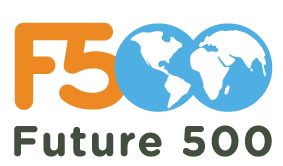The Embedding Project: Operationalizing Sustainability
Phoebe Fu, Manager at Future 500 Published January, 2024
The Embedding Project: Operationalizing Sustainability
Our team had the pleasure of hosting Dr. Stephanie Bertels, Founder of the Embedding Project, in conversation with our Corporate Affinity Network members. Dr. Bertels shared her research, and several freely accessible tools her team has developed to support companies in embedding various social and environmental factors across their operations to inform decision-making. We gleaned three key insights from our group discussion with her:
1. Storytelling is crucial, but companies don't do it well. Stories are how humans have evolved to communicate meaning. However, companies often default to listing a position, commitment, or various facts without sharing the deeper element of 'why' and 'how' the company got there. Companies that do storytelling well articulate their 'pattern of choices' – things like the opportunities and constraints they face and how that informs their choice between different decisions, essentially answering, why did we make that choice? Storytelling in this fashion, while foreign for many companies, increases credibility and transparency, even when you might be explaining what prevents the company from taking the action that people want you to take.
Future 500 Take: Just as no individual is perfect, no company is perfect. So it’s critical that companies paint a realistic (not a sanitized rosy) picture, admitting imperfection (without raising corporate counsel’s ire), and level with employees and external stakeholders on what is needed so they feel vested and empowered to roll up their sleeves and get to work.
2. Committing to commit. Companies often face pressure to make commitments on an issue before they firmly understand its impact on their business. Take, for example, nature and biodiversity. Companies today are increasingly expected to adopt a biodiversity management strategy and begin making nature-related disclosures. However, most companies still need to comprehensively assess their nature impacts, what credible commitments look like, and how to disclose them. To close this gap quickly, she recommends companies acknowledge that they understand the world needs nature-positive business strategies and commit to a specified timeline with transparent steps to uphold their commitment and follow through.
Future 500 Take: It’s ok not to know how emerging issues (like biodiversity and nature) will impact your company and your sustainability strategy and commitment. While it may seem like stakeholders expect you to have immediate answers, they know it takes time to understand new issues. In these cases, what’s crucial to earn and maintain stakeholder trust without making premature commitments is to determine—and then disclose—how the company plans to inform itself on the issue to be able to craft a credible strategy and commitments and in what timeline it will do so. Failing to do that risks making the company appear silent or even ignorant of the issue, potentially putting it in the crosshairs.
In addition, on the topic of “Nature-Positive” corporate strategies, this issue framing has evolved quickly as a top priority for stakeholders. It offers a powerful integrative narrative that captures climate and people, enabling a natural shift away from ESG framing. If your company isn’t yet coming up to speed on this topic, it’s a good time to start.
3. Materiality is not a strategy. Materiality assessments are an important tool, but they have substantive limitations. They should inform strategy but not drive it. For example, materiality assessments are a snapshot of what is important to external and internal stakeholders – but they fail to show an issue’s trajectory. A 'stock email' to a long list of stakeholders for feedback limits the nuance that can be gleaned, and often, companies don’t do the due diligence necessary to ensure a meaningful set of stakeholders are engaged, leading to flawed output and, therefore, flawed strategy.
With such assessments, one often finds that stakeholder priorities may not align with importance. Dr. Bertels shared the example of a major North American port where a traditional materiality assessment identified marine plastic debris as a major issue because it is an issue stakeholders broadly know. However, the port was a trivial source of marine debris, and the Port’s waters were little affected by such pollution. In contrast, wood waste was a major yet underappreciated issue with significant negative impacts. So, the port had to employ significant storytelling with its stakeholders, articulating why it was prioritizing wood rather than plastic waste. In this instance, the materiality assessment would have focused the port on a more trivial issue and delivered a subpar outcome, but the port was able to adapt.
Future 500 Take: We couldn't agree more. Materiality assessments are tools but should only be one component that informs smart strategy. It’s critical to understand their limitations and how to weigh the importance of issues, and when companies commit to such assessments, they ensure broad stakeholder input, particularly from more likely critics.
For more information, visit the Embedding Project to learn more about Dr. Bertels and her colleagues, who have compiled a rich resource database to help companies embed environmental and social factors into their business planning and strategy.
Future 500 is a non-profit consultancy that builds trust between companies, advocates, investors, and philanthropists to advance business as a force for good. We specialize in stakeholder engagement, sustainability strategy, and responsible communication. From stakeholder mapping to materiality assessments, partnership development to activist engagement, target setting to CSR reporting strategy, we empower our partners with the skills and relationships needed to systemically tackle today's most pressing environmental, social, and governance (ESG) challenges.
Want to learn more? Reach out any time.
More from our team:












